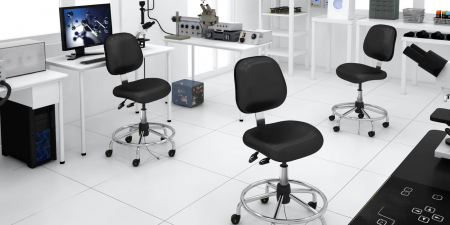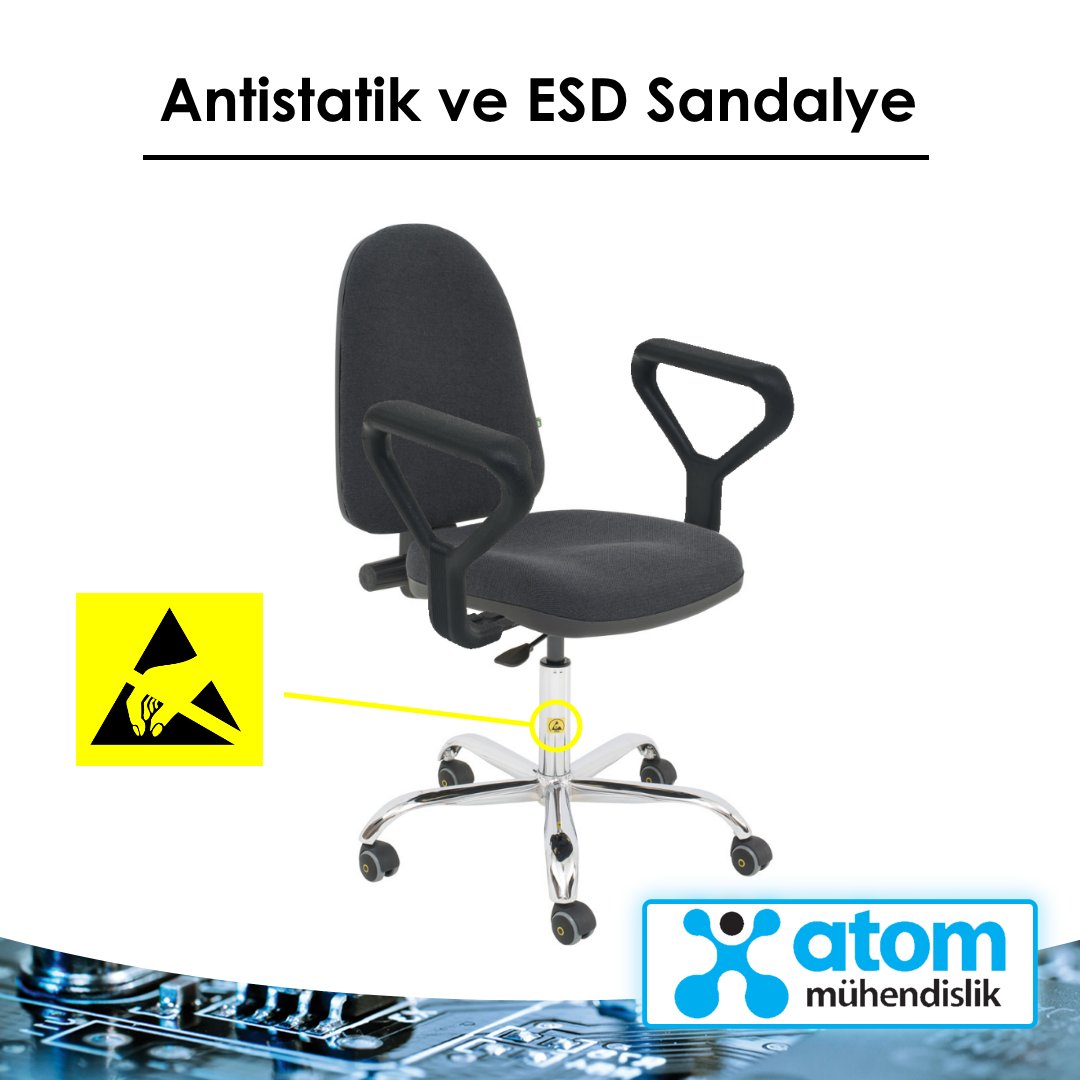Standard chairs used for sitting in an ideal electrostatic protection area are very serious sources of static electricity. Standard chairs must have Antistatic and ESD features. At this point, we would like to inform you about what you should pay attention to when buying a long-lasting chair that meets the right standards.
According to the general standard EN61340-5-1, it states that all parts (plastic, fabric, wheel) that make up the chair must be antistatic, when you buy a chair, you must confirm from your supplier whether it is antistatic (especially all plastic parts) and request a test report. EFM devices tell us whether the plastic material is antistatic or not. Apply an object that will generate static electricity on the plastic material, then bring the device closer to the area. If the result is > 400 V, do not use that product. The ESD (Electrostatic discharge) feature is the transmission feature on the surface from the seat to the contact of the wheels with the ground. To test this, surface resistance measuring devices are used, one of the probes of the device is placed on the seat and the other on the floor. If the value obtained as a result of the test is <109 (Ω), it is said to have the property of conducting. Another issue is that the seat part should be orthopedic in accordance with the occupational safety law and it should prevent the legs from contracting. Finally, the wheels must be made of conductive rubber material. The biggest benefit it will bring you is that it prevents the wheels moving on the dust accumulated on the floor from forming black spots. Plastic wheels, on the other hand, crush the dust on the floor in motion, causing black lines and it is not possible to get out.
If there is an EFM Tester and Surface Resistance Meter in your business, make sure to test the chairs you buy. For cleaning, you must use detergents with antistatic properties.
Hope to see you in another informative article,
Cengiz Karatas
Physics Engineer




